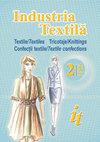Quantification and analysis of carbon neutralization in mulberry and silk in China
IF 0.9
4区 工程技术
Q3 MATERIALS SCIENCE, TEXTILES
引用次数: 0
Abstract
With the concern of global warming, efforts are increasingly focused on understanding and addressing carbon emission in the life cycle of silk products. Whereas, the carbon sequestration effects of mulberry and silk are rarely mentioned in the previous studies on the carbon footprint of silk products. In this regard, this study constructed a biomass method to adequately evaluate the carbon sequestration effects of mulberry and silk produced in China. An application demonstration was conducted in the area of mulberry fields and the cocoon yield of the silk industry in China from 1990 to 2021. The results indicate that mulberry fields in China fixed 875.9608 million tons of CO2 from 1990 to 2017, while silk in cocoons produced in China fixed a total of 5.9528 million tons of CO2 . These vast quantities of carbon trapped in mulberry leaves enter the silk, the silkworm chrysalis and silkworm droppings, as well as other by-products as silkworms ingest, grow, and spin cocoons. This demonstrates that increased exploitation of sericulture by-products can also contribute to carbon sequestration. Besides, the influence of the silk product's lifespan should be taken into account when quantifying and analysing the carbon neutralization of silk. Therefore, extending the usage life of silk products as long as feasible can also have a great effect on the carbon sequestration of silk products.桑蚕和蚕丝碳中和的定量分析
随着全球变暖的关注,人们越来越关注丝绸产品生命周期中的碳排放问题。而在以往对蚕丝制品碳足迹的研究中,很少提及桑蚕和蚕丝的固碳作用。为此,本研究构建了一个生物量方法来充分评价中国产桑蚕和蚕丝的固碳效应。在1990 - 2021年对桑田和蚕业蚕茧产量进行了应用示范。结果表明,1990 - 2017年,中国桑田固定了87596.08万吨二氧化碳,中国蚕丝固定了595.28万吨二氧化碳。这些被困在桑叶中的大量碳进入蚕丝、蚕蛹和蚕粪,以及其他副产品,如蚕茧、生长和结茧。这表明,增加对蚕桑副产品的利用也有助于碳固存。此外,在对蚕丝的碳中和性进行量化分析时,还应考虑到蚕丝产品使用寿命的影响。因此,尽可能延长蚕丝制品的使用寿命,对蚕丝制品的固碳也有很大的作用。
本文章由计算机程序翻译,如有差异,请以英文原文为准。
求助全文
约1分钟内获得全文
求助全文
来源期刊

Industria Textila
工程技术-材料科学:纺织
CiteScore
1.80
自引率
14.30%
发文量
81
审稿时长
3.5 months
期刊介绍:
Industria Textila journal is addressed to university and research specialists, to companies active in the textiles and clothing sector and to the related sectors users of textile products with a technical purpose.
 求助内容:
求助内容: 应助结果提醒方式:
应助结果提醒方式:


